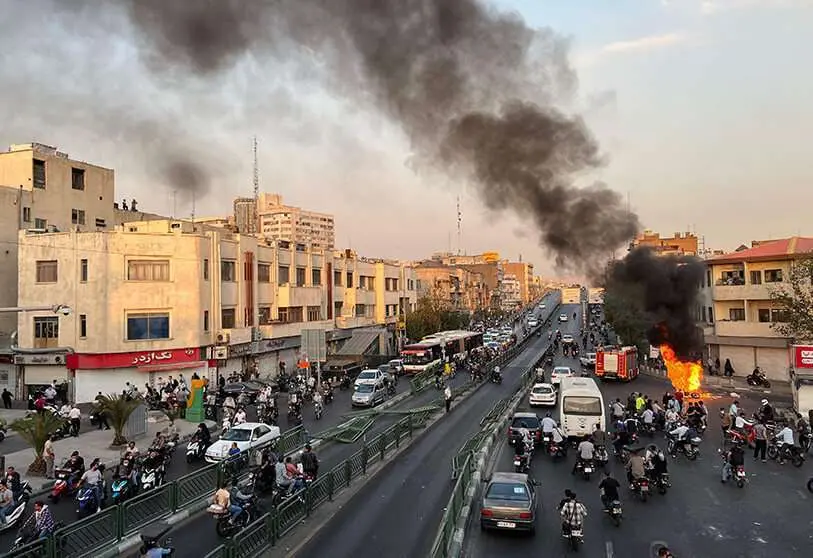Iran opens the door to dialogue as oil workers join protests

The demonstrations in Iran are entering a new stage that opens the door to optimism for Iranian society. After weeks of protests that have been met with violent retaliation by state forces, Tehran has decided to consider the option of sitting down to negotiate and admitting certain mistakes, something unheard of in Ebrahim Raisi's government. The trigger for this change of script has been the entry of oil workers into the demonstrations, something that the Iranian government sees as a major threat to the control it has been applying since the outbreak of the riots.
The entry of these workers is, according to observers, a turning point in the evolution of the protests. Forty years ago, their stoppage was the key moment that caused the collapse of the Sah regime, leading to the arrival of Ruhollah Khomeini, the predecessor of the current supreme leader Ali Khamenei. Now, for the first time, the country under Raisi's presidency is opening the way for dialogue, believing that at this point it will be very difficult to end the protests without sitting down to talk with the demonstrators.

What began with Tehran labelling the protests as a foreign conspiracy has finally cleared up all doubts. And those doubts have settled within a government that fears for its control. This has been reflected by one of the figures closest to Khamenei, Gholamhossein Mohseni Ejei, president of Iran's Supreme Court, who has been the first to offer dialogue to the protesters. This first step is seen by observers as a clear sign of concern, as they see it as very difficult to put an end to the demonstrations through police repression, as they have done on previous occasions, and are forced to follow another path.
Iranian society is not willing to remain under the yoke of the Ayatollah dictatorship and they have made this clear in every day of protests since the murder of Mahsa Amini while in police custody for wearing the wrong headscarf. It is this show of strength on the part of Iranians that has compelled Ejei to assure them that "they must know that we have an ear to listen to protests and criticism, and we are ready for dialogue". He also admitted, in a truly surprising statement coming from one of the supreme leader's strongmen, that Iran's political system may have "weaknesses and flaws".

However, not all of the chief justice's words were self-critical. He was also keen to point out that, while "ready to listen to suggestions and correct any mistakes", a "distinction must be made between peaceful protests and violent unrest". A distinction that, on the other hand, the country's authorities do not stop to make when it comes to responding violently in the streets. What was once, according to Khamenei, a "deep, broad and very dangerous plot" is now forcing the Iranian government to give in for the first time in a long time.
The protests in recent days have reached a level of instability that has led to the closure of the Iran-Pakistan border. The southeastern Iranian city of Zahedan witnessed one of the most troubling episodes of this wave of demonstrations. Ali Mousavi, provincial intelligence chief of the Islamic Revolutionary Guard Corps, was shot and killed in an attack claimed by Jaish Al-Adl, a jihadist militant group based in southern Iran. This was one of the events that set the tone for the protests, which are now giving way to a new scenario in which dialogue with the Iranian government seems closer than ever.









